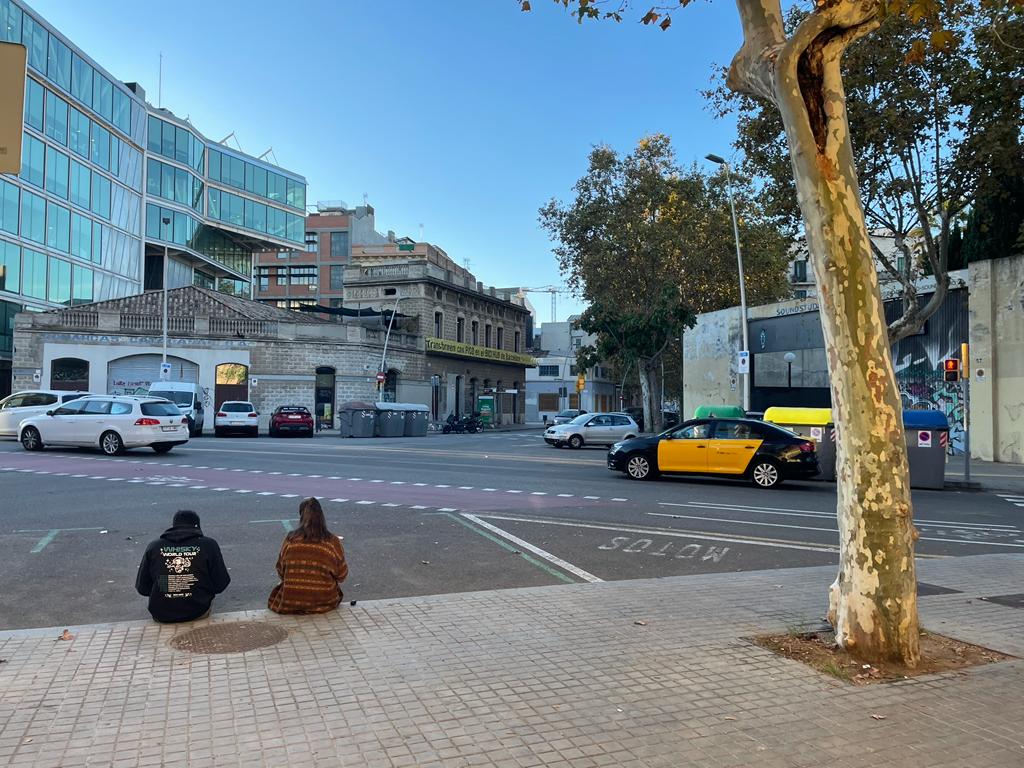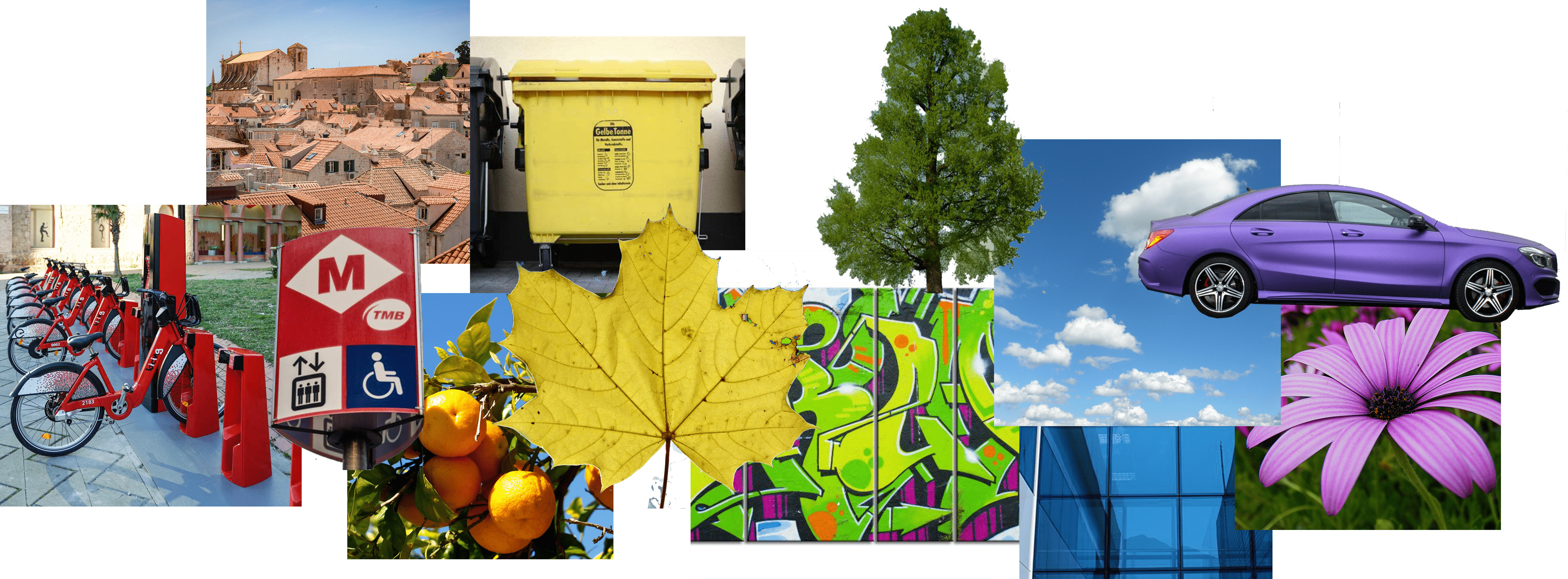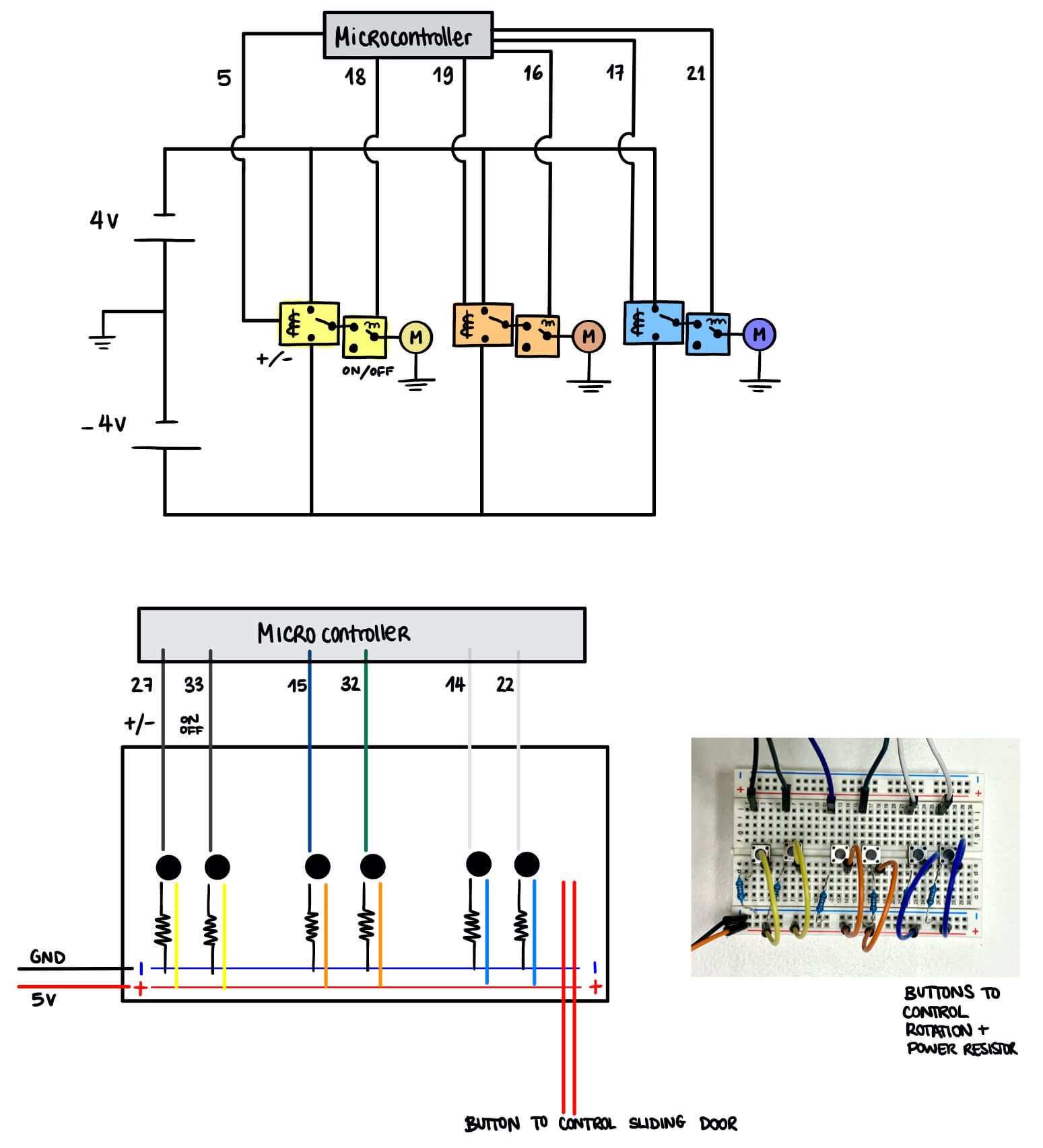term 1
tech beyond the mith

forensics of the obsolescence - laptop
The task was to disassembly an electronical device and understand how its working and what is it made off. The specific details: serial number: A1046, Brand: Apple (in California), Model: Powerbook G4, Color: silver, Assemblied in: Taiwan, Rated: 25.4VDC, Specifications: Canadian ICES-003 Class B, Tested: FCC standards (Home or Office use)
We figured out the laptop works like this: the chargeable battery provides power, the CPU provides computational power, the GPU processes the graphics, the RAM stores the short-term data and ensures the speed, the hard drive stores data indefinitely, the motherboard connects everything together and runs the operation system, the wifi cards and telecommunication chip provide access to the internet wireless and with a cable, the two fans cool the system down, the two speakers provide audio. The display contains 2 frames, 6 layers for light (6 different materials) and 1 layer for pictures and a horizontal light (LED-stripe) on the top edge. In the computer itself you can find hard drive (made in Thailand, assembled in China), air port extreme / wifi part (assemblied in Taiwan), wifi connector (Korea&Mexico), 2 fans, battery to remember the time, cd reader (Japan), a case to insert another memory card, on-off-button, two speakers, motherboard, two RAM-cards, various ports and sensors under the speakerplates to check the brightness in the environment with a photodiode (BS520, Brand: sharp)



The laptop is not working because of the two possible reasons: We believe that one of the two fans were damaged possibly leading the CPU to overheat and melt. We guess the whole laptop is not usable anymore due to its outdated components.
We learned a lot while dissambling the laptop: parts mostly made and assembled in Asia, how many different parts one laptop contains, the warranty was void almost immediately. nowadays you wouldn’t even be able to open new macbooks so easily. Also what was super surprising: a big amount of screws (about 100), how many countries were involved in the production, many of the components inside the macbook were not produced by Apple, but instead companies like Samsung, Intel and Motorola, how much the technology changed in a short time, how precise the parts were integrated and connected to each other, how difficult it was to dissamble it - they don’t want us on the inside.
MORE INFOmeasuring the world - urban gardeners
We got the task to think in groups about questions we are asking ourselves and the following examples develop: Why we don´t use the rain water? Why we are still using cars? How can we take a nap in the city? Why do foreign people have to be registered? Why we are still producing more clothes? Why we don’t segregate garbage? Why we are not producing our own food? How can we grow our food without pesticides? Why supermarkets cell products from all over the world? Why we still need packaging for our vegetables? Then we needed to define our groups objective. We wanted to focus on how you can prevent overproduction, mass production and food transportation around the world, so we defined our objective “Producing food” with the specific question: Can I produce the ingredients of my meals at home or from my neighbourhood?
Then we could chose on of 5 different tools to start measuring and collecting data. We decided to take “CITIZEN SENSING TOOLKIT”, which we select, because we wanted to figure out how is the weather (temperature, humidity, light, eCO2, eVO2) in the possible free spots to grow food in the neighbourhood and compare it to what the plants require to grow there. The tool has a specific way of working: The first step is to connect the battery. The kit will light in red (configuration mode), then we needed to sign up to the Smart Citizen Platform. When the light is red, the CSK is ready to set up, either by WiFi or SD Card connection. When the light is blue, the SCK is on Wi-Fi connection. In this way, the device will publish the data every minute on the smartcitizen.me platform. When the SCK is pink, it is on offline mode and is saving the information on the SD Card. When we measured, we pressed the button once until the light turned pink, we measured for 10 minutes then switched it to stand turning the light red. Then we needed to find a good and clear location to place the Citizen Sensing Toolkit.

Before starting the measurements we chose which route we want to go to get the best result. First, we choose the places that are already working as urban gardens, then we start thinking of possible places that might be used to check if they can be used to growing the food, and what types of food they might be there. The data was taken from 14:30pm to 16:30pm in 7 places that we check before start. Using the Smart citizen kit, we planned to visit 6 different locations to gather data on light quality, humidity, Temperature and particle matter.

After measuring we start evaluating our data, while using different kind of parameters: x = temperature, y = light, diameter of the bubbles = CO2 particles. We displayed the ideal location conditions needed for the 4 vegetables we studied above. Potatoes, carrots : not any location studied respond to the requirement of light needed. Lettuce, tomatoes : only the rooftop of IAAC would allow us to grow these! This shows that in November the temperature in Barcelona is still good, but there is not enough light for the plants to grow.
Our conclusion is, in order to realize the experiment properly, we require to collect data during the year, because of the time of growth of the plants. Nutritional data is required to estimate possible species to grow, and therefore the space demanded for a person to grow his food. In addition, being aware that particles in the air and other gases might affect the correct development of plants. And, try to not be around the sensor while it is doing the measurement because it affect the results. We recommend is to do it at different times a day and in all the seasons if it is referred to growing plants. We need to continue the research on the vegetables that we can grow in the winter season with very little light. To record more accurate and more comparable data, it would be better to record a full day and not just 10 minutes to know how much light the location gets. Here we just recorded 10 minutes in each spot and not at the same time of the day (between 1pm and 4:30pm).We didn’t pay attention to the noise sensor so we made some noise discussing just next to the sensor during the data capturing. It would be interesting to stay silent or go further during the recording so we can see how much frequentation there is in the different locations.
MORE INFO
personal
Its really sad to see how many people through away electronical devices so quickly. It costs more money and time to repair than buying directly a new one. Also its hard to recycle electronical products, often they are glued to together or include different kind of materials, which need to be separated first. Is it possible to run another operating system on an old laptop? Theoretically yes, depending on which laptop but in principle it is possible. The supply chain of an electrical appliance is very long, and involves many different countries. Unfortunately, things are always thrown away quickly because it would be more expensive to have them refurbished. Maybe you can also make a startup where mobile phones from different companies can be put together to make your own reuse, repair! Fairphone already does it? Or give the customer the chance to repair their phone.
designstudio: meditation

This designstudio session we had a guest called Kate Armstrong in our class, who gives us the task to create a sensory map with the help of her meditations. The first meditation audio was an introduction about how we should do the map. Then we need to chose one topic our of 8 (Vibe, Temperature, Sound, Colors, Forms, Texture, Light and Use), I chose colors, because colors define and I am a visible person. The last meditation was about the final reflection. We needed to go outside around IAAC and find a place around Poblenou, where we wanted to do the meditation and observation.
There are different aspects when observing colours, they are artificial or natural, strong or weak, dark, cold or warm or light or rich in contrast. Cold colours like blue give me the feeling of distance, hardness and anxiety. Warm colours like red give me a feeling of trust, openminded, diversity and the desire to stay longer. When I was sitting at the street and looking around I could see many different kind of colours in different kind of things, like window frames, cars, graffiti, peoples clothes, trash bins, bicycles, hairs of people, posters, sky or autumn leaves of the trees. But the strongest colour in this place was unfortunately grey, because of the streets, pedestrian walkways and cars. In total I can say that every gives me a different vibe: red : passion, fire, heat, blue: water, safety, artificial, sky, coldness, grey: cars, streets, darc, bright, artificial, coldness, green: luck, heat, yellow: optimism, natural, trust and orange: pleasant. A big difference you could also the between real colours like the sky, the leaves and painted things like cars, clothes and posters.

To reflect the meditation I can say that this place reminds me on a autumn day in the city, when I was alone in Paris waiting for my friend, it was also a sunny day with very similar trees (beeches) and a crowded streets. I felt comfortable and enjoyed the sun on my skin. I would come back to the place but not for relaxing, for this its to crowdy and not enough nature/grassland. In general there are different ways for a documentation which could be: 1 second every day, stop motion, daily overview, bodycam, make your own mount for camera on body, webcam, voice message, WhatsApp to myself, 100day challenges, on Instragramm or your website, gif's.
MEDITATION KATE A.08.11.2021
almost useless mashine: robotic arm

The second week the task was to think about a topic, than create a machine for it while using the electronical parts of the disassembled electronical devices. This machine is inspired by the ironies of the “circular” ecology; and the waste cycle that we produce that enters our oceans and ultimately ends up back in our bodies through consumption. A feeling of hopelessness… when you throw trash away it will always come back to bite you. The idea is that the machine repeated its actions in a loop, a ball of trash could go through the contraption and fall into a pool of water and also you have a human interaction with the use of a button. So we decided to take a button, an electromagnet, the motor of the cd drive of the laptop and two motos of the electronic vacuum cleaner. Generally it works like this: A robotic arm picks ball up with electromagnet and transports it to the top of the ramp, the ball falls down ramp (gets dirty on the way) and falls into a water basin, the dirt from the ramps starts to pollute the water. The ball falls to the bottom and of the basin the arm repeats. There is an option for the human to interact, press a button and allow the ball to fall directly into the water without “polluting” it.
For the fabrication we used the lasercutter, sawing, drilling and sanding mashines, a big amount of hot glue and a hot gun for bending the plastic parts. The electronic part is quiet complicated. We used over 40 cables and around 8 relays to make it work. What was really successful: Prototyping the shape, bending acrylic into V shapes for ramps, laser cutting wooden parts for ramp and motor arm, programming the arm and adding coffee grinds to the ramps to represent “pollution”. What was not that easy: Fixing the top ramp door function. It would go down but not come up again. We had to create railings for it to be guided back up, fixing electrical components onto the physical contraption, considering the weight load or final piece and editing the shape to make sure the movement of the parts worked.
personal
This two weeks were a lot of fun and also I learned more things about electronics. All three projects helped and learned in a different way. The first project of disassembling show me that not all parts are made in the same country, which is sad and say that the supply chain for each electronical device is really long. It was interesting to see how the modern production can build things super precisely. The second task showed me different kind of tools to reflect and how to evaluate the data in the end, which was really interesting. The third week was nice, because I could be and work many hours in the workshop and learn much more about motors and their functions. All in all this two weeks were kind of stressful but worth it!